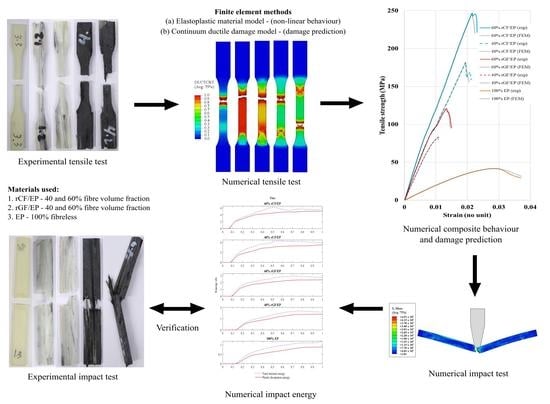A Finite Element Study to Investigate the Mechanical Behaviour of Unidirectional Recycled Carbon Fibre/Glass Fibre–Reinforced Epoxy Composites
Abstract
Share and Cite
Karuppannan Gopalraj, S.; Kärki, T. A Finite Element Study to Investigate the Mechanical Behaviour of Unidirectional Recycled Carbon Fibre/Glass Fibre–Reinforced Epoxy Composites. Polymers 2021, 13, 3192. https://doi.org/10.3390/polym13183192
Karuppannan Gopalraj S, Kärki T. A Finite Element Study to Investigate the Mechanical Behaviour of Unidirectional Recycled Carbon Fibre/Glass Fibre–Reinforced Epoxy Composites. Polymers. 2021; 13(18):3192. https://doi.org/10.3390/polym13183192
Chicago/Turabian StyleKaruppannan Gopalraj, Sankar, and Timo Kärki. 2021. "A Finite Element Study to Investigate the Mechanical Behaviour of Unidirectional Recycled Carbon Fibre/Glass Fibre–Reinforced Epoxy Composites" Polymers 13, no. 18: 3192. https://doi.org/10.3390/polym13183192
APA StyleKaruppannan Gopalraj, S., & Kärki, T. (2021). A Finite Element Study to Investigate the Mechanical Behaviour of Unidirectional Recycled Carbon Fibre/Glass Fibre–Reinforced Epoxy Composites. Polymers, 13(18), 3192. https://doi.org/10.3390/polym13183192







